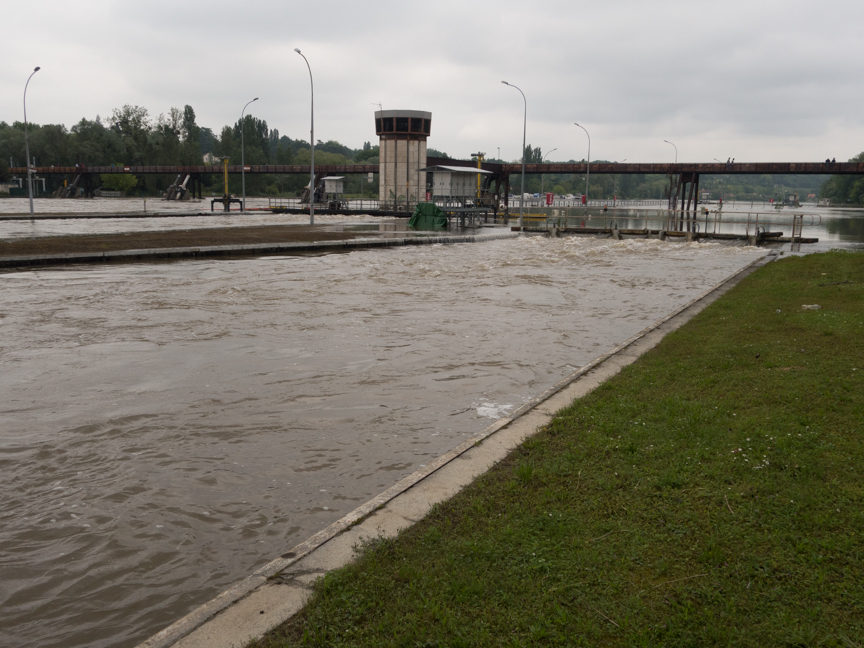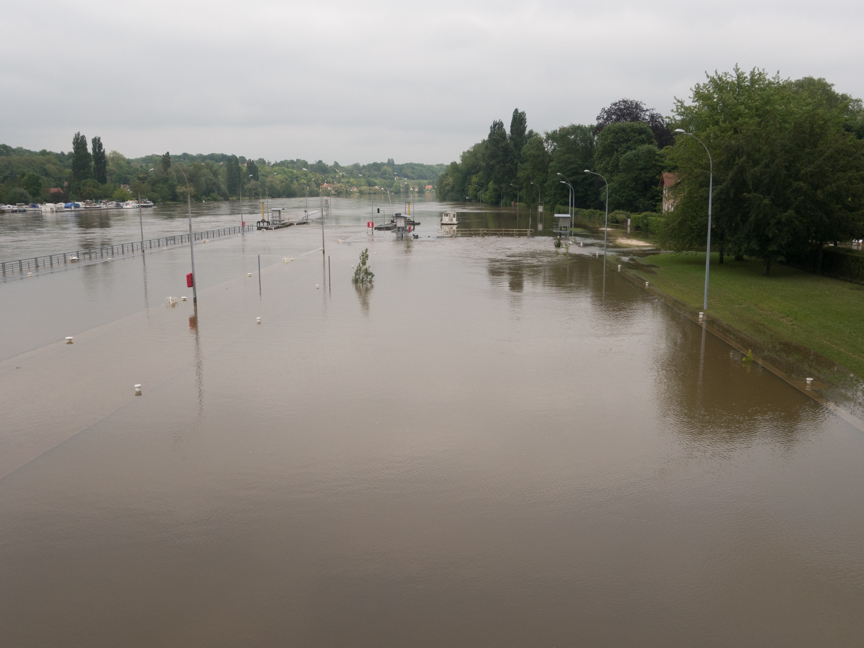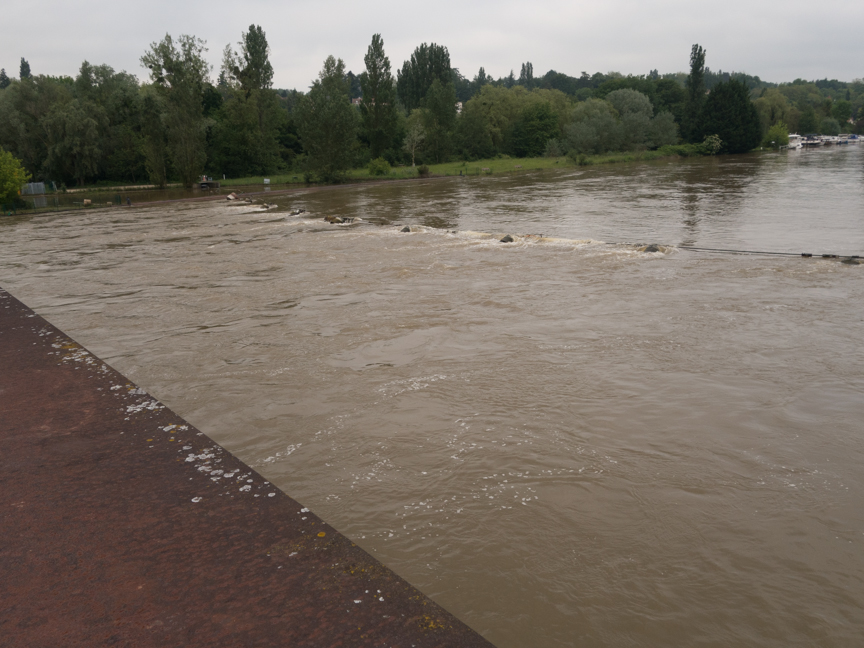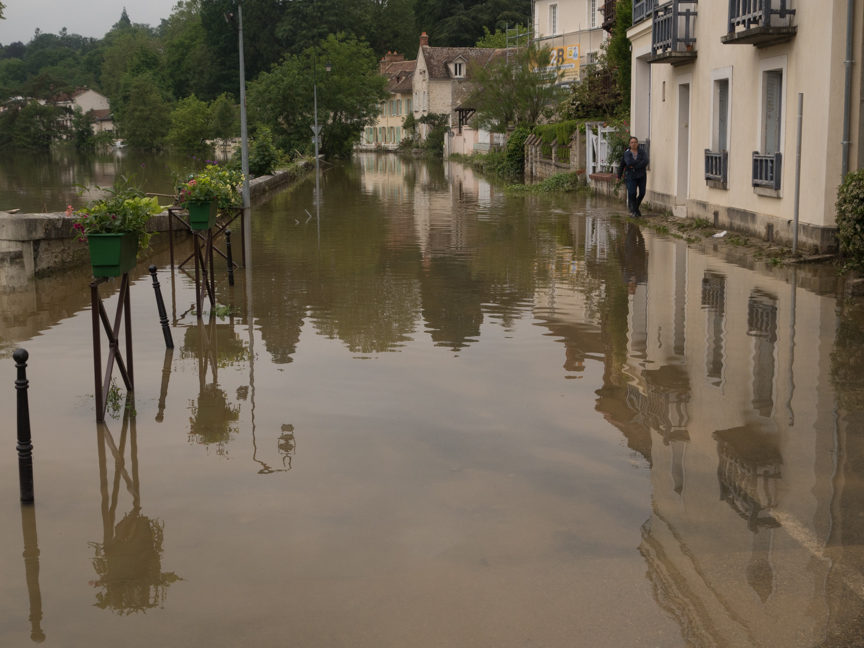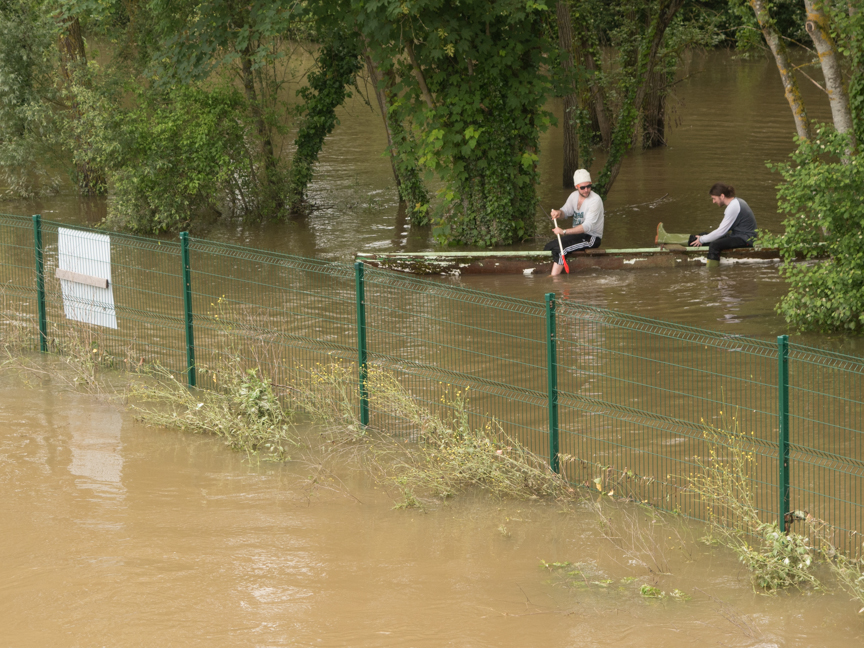We made it, safely and soundly! The flight over was fine: left on time, the meal was actually tasty (not unusual on Air France), we arrived on time, contacted the car-lease company without a problem, a van came to pick us up, the car was ready (bright red, our favorite color for a car), and the drive to Bois-le-Rois uneventful. The only hitch was arriving at Charles de Gaulle airport and seeing a loooooooooooooong line for passport control. I guessed it at 90 minutes, but then another section opened up and it was only 50 minutes. The most frustrating part: there were twenty stations available – two passport officer positions per station – and exactly half of them were staffed. This with way more than a thousand people in line and more arriving every minute. Oh, well, at least we knew we wouldn’t have to wait for our luggage.
Last week in New York we kept hearing disturbing news from France: strikers had closed six of eight refineries, so gas was not going to be available; the air traffic controllers were going on strike the weekend we were to travel, and the Seine was flooding. In the event, getting gas is no problem; the French government evidently bought-off the controllers, and the Seine didn’t quite flood Paris. But the river is the highest it’s been in decades, and many up-river towns are, indeed, underwater. We crossed the Seine in Melun and could not believe how high it was.
So after a fine “welcome back” breakfast chez Germain, we walked down to the locks on the Seine at Chartrettes. We’ve seen the river high, but this was jaw-dropping.
The lock requires a dam that generally lowers the river about 12-15 feet between the levels above and below the lock. Saturday there was no drop, at all. Below, you see water running out of the main lock at Chartrettes.
Below, looking upstream from a bridge across the lock. Normally, the area from the right side to the fence along the left is above water; the level in the lock at its highest is about five feet below what you see here. The locks are, of course, not operating and the water is flowing over the lock gates at both ends.
The Seine here flows at about 2-3 miles per hour normally. Saturday I estimated it at about 15 miles per hour. So what you have is a river fifteen feet above normal level, traveling five times faster than normal, flooding banks on both sides, heading toward Paris, where it will join the Marne river – not as high, but way above normal – and enter Paris, where the Seine narrows to about two-thirds the width you see here. In Paris, the Seine peaked at about 20 feet above normal, flooding all the quai’s and closing the Louvre and d’Orsay museums, which are both next to the river. I saw a photo of the main floor of the d’Orsay, with about two feet of water in it.
In the beautiful town of Samois-sur-Seine, where some people probably wished that the “sur-Seine” part of the name wasn’t so literal:
But the boaters enjoyed exploring what is usually dry ground:
The strongest impression of all this is just how freaking powerful water is when it’s out of control. Nothing anyone could do was going to slow this river down or keep it from damaging whatever was in its way. Amazing.
Fortunately, the rains have stopped and the river level is dropping. Sunday we walked to the locks and saw that the level was down about a foot or foot and a half. Still, it will be days before the river traffic can start again; there’s no way a river barge could go up this river, and going down it would be out of control and at the mercy of the currents most of the time. Our péniche-watching will have to wait a week or so.
Anyway, we are glad to be back in France!

